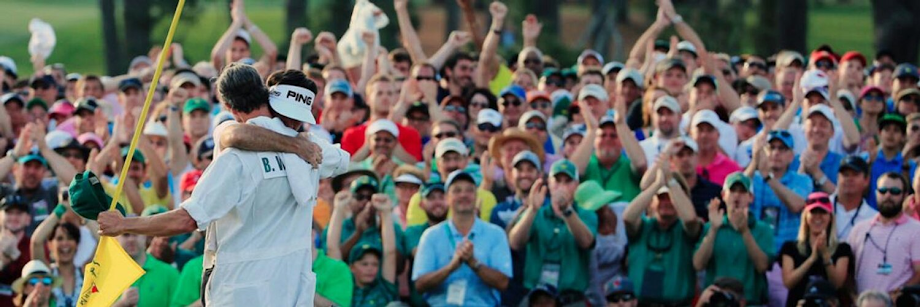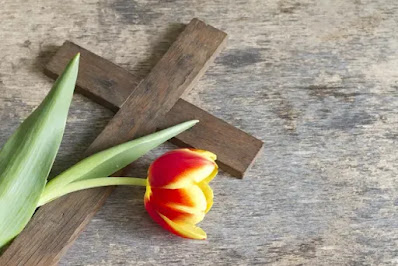In recent year, many Catholics have grown more familiar the term "encounter." Why? It's a phrase that Pope Francis has returned to over and over again in his addresses and writings. In fact, the Holy Father has made famous the phrase “culture of encounter,” which simply means that I have something good to give to another person, and the other has something good to give me. It's not a revolutionary term or teaching. It's quite simple and yet, it's worth further consideration. What might that good be? The Daily Reflection from Dynamic Catholic coupled with my return to the University of Notre Dame for the Alumni Association Leadership Conference gave me an answer.
 |
| Notre Dame Women Connect Board hosts Cheering Her Name, welcoming seniors as alumnae! |
The first speaker was Super Bowl Champion, keynote speaker, and bestselling author, Ryan Harris. As written on his website, "Harris inspires audiences across the nation by incorporating lessons learned in success and failure throughout his 10-year NFL Career." He is one of the better speakers I have heard.
In addition to this mantra: I am. I can. I will. he promoted the importance of personal example. He said "leaders don't lead by example but with example." His secret to success was "have fun" everyday and celebrate every win. Sometimes, you might have to trick yourself into doing that. For example, he admitted arriving at practice, tired, sore and not exactly excited about going up against teammate DeMarcus Ware. He shouted out, "Whoo! Oh yeah! Rock n Roll!" He added, "That's the attitude I had to take." It was certainly a fun story to hear.
The audience was eager to give him a standing ovation. His energy and passion, his clear message and challenge for the leaders in the room was so inspiring. But a few minutes later, the chair of our group, Erin started talking to him. Knowing my interest in Sports and Spirituality, Erin made a point of introducing me to Ryan.
A devout Muslim, I was able to share with Ryan what I teach about another Muslim athlete, Hakeem Olajuwon in my class, Sports and Spirituality. I thanked him for his message and the preparation he put into it. Our conversation was such a spirited and special encounter.
Later in the day, I went to mass in Alumni Hall chapel. I was happy to see the return of Father Mark Poorman, CSC to campus. A "recovering administrator," he teaches an ethics class, Character, Conscience and Case Studies: Applied Christian Ethics.
In his homily, he said that most students see themselves as the leading character—of their own story or blockbuster movie. He asks students to consider "Is it possible that you might be living in a story larger than your own?" And, with that increased perspective in mind, why not reflect upon: What is God enabling me to do? I said to myself, what a great way to think about vocation—What is God enabling me to do?
After mass, I asked him about his class. He shared that students spend the first week completing and discussing a values inventory. Why? Our values drive our decisions. Our decisions reveal our character. Our character is our destiny. This inventory asks students to answer questions like: What is the most important quality in a friend? honesty, loyalty or trustworthiness. The inventory is thorough. Look for one for athletes in the future.
While neither of these encounters required walking, the next day, I asked a fellow board member if she would like to go see the statue of Muffet McGraw. Erected in December 2023, the art work honors the two-time national championship winning women's basketball coach. It is the first statue of a female coach on campus.
Being farsighted, I realized pretty quickly who it was. He looked at us and not wanting to injure the head coach of Notre Dame football or make a fool of myself, we simply said "Hey Coach!!" I gave a virtual high five, while jumping for joy. I couldn't help but think, had we not visited Coach McGraw we would not have encountered Coach Free. Thank you, Coaches!
Upon finishing our meetings, I decided I should walk to the Grotto—for fear that I might run out of time and not make it to the spiritual center of campus. I took some time in prayer, I lit a candle and touched the stone from the Grotto in Lourdes. I decided to walk back on the path opposite of how I entered the sacred space.As I came close to the Main Building, I realized Father Bob Dowd, CSC—the incoming University President and I would cross paths. I have not seen Father Bob in maybe 20 years? I reintroduced myself and we talked about Mass in Farley Hall. I mentioned that I saw him at Holy Cross Center in Berkeley after my time in ACE. We recalled a few memories, he asked why I was on campus and I wished him the very best in his new role.
I thought to myself: no walk to the Grotto, no encounter with Father Bob. And, In what other place can a person encounter two great leaders in the very same day?
I told another board member about my encounter and she informed me that he was her neighbor in Cavanaugh Hall. And, he will continue to live there as President. Love this—President of the University and living on the second floor of a woman's dorm. Nice work.
I came to the board meeting with a fair amount anxiety about the work that had to get done both at school and on campus. While it comes with a fair amount of responsibility, my role with Notre Dame Women Connect is an honor and privilege. My parents reminded me how fortunate I was and I am to have an opportunity like this. Gratitude can help manage anxiety.What makes my time at Notre Dame so meaningful and memorable are the experiences...the encounters, the people and the places. I can't begin to name them all—NDWC board, the seniors from Cheering Her Name, my classmate and friend Marco and learning from Sara about Iowa basketball in the 80s. My new (but should be longtime) friend Mike Brown, John in from Mexico City, the award winning SFND Club leadership, especially Steve and so many more. None is a given. Each one is a gift. So many are unexpected ...and that so special.
Grateful for Our Lady who lights the way. We are ND. Go Irish
Photo Credits
Grotto




















